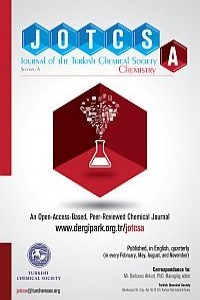Optimization and Selection of Mobile Phase for the Determination of Multiple Pesticide Standards Using Liquid Chromatography-Tandem Mass Spectrometry
The selection of the best mobile phase setup is one of the most important factors to be considered prior to quantitative instrumentation of multiple pesticides. Usually, mobile phases comprises of water (A) and an organic solvent (B) are the setup used in liquid chromatography instruments for the analysis of pesticide residues in various samples. Unfortunately, most of the analysis are being carried out without optimization and selection of the best mobile phase setup to improve the sensitivity of the instrument. For that reason, the comparative analysis of the reportedly used mobile phases and some few suggested ones was carried out on the multi-pesticide mixture of 0.1 mg/kg (100 µg/kg) standard solutions and quantified with liquid chromatography-tandem mass spectrometry (LC-MS/MS) instrument. Consequently, the best mobile phases setup that resulted in the sum of average total chromatographic peak areas (ATCPAs) and average total chromatographic peak heights (ATCPH) for the total ion chromatography (TIC) scans as an index that correspond to the concentration levels was selected [0.1 % formic acid in H2O (A) and 0.1 % formic acid in acetonitrile (ACN) (B)]. And further optimization was successfully carried out on the selected mobile phase A and the resulted setup [1 % ACN and 0.1 % formic acid in Milli-Q-water (mobile phase A) coupled with 0.1 % formic acid in ACN (mobile phase B)] improved the instrumental sensitivity on the targeted analytes. Thus, this justify the potential benefits of optimizing setup of the mobile phases prior to LC-MS/MS instrumentation of multi-pesticide analytes.
Keywords:
Mobile phase, Analysis of multi-pesticide residues, Liquid chromatography-tandem mass spectrometry Total ion chromatography, Total chromatographic peak areas,
- Başlangıç: 2014
- Yayıncı: Türkiye Kimya Derneği
Sayıdaki Diğer Makaleler
Abhishek DWİVEDİ, Prem BHARTİ, Sudhish SHUKLA
Duygu TAŞKIN, Talip ŞAHİN, Mücahit ÖZDEMİR, Bahattin YALCİN
Özlem AKGÜL, Ayşegül ATEŞ, Şafak ERMERTCAN
Zehra YILDIZ, Hacer Ayşen ÖNEN, Ozan Gazi DEHMEN, Atilla GÜNGÖR
